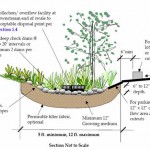by Catherine Haug, April 19, 2013
Back in 2010 I posted two related articles about Shelli R’s experimentation with sprouted barley, oat and sunflower seeds as feed for her dairy goats. Although she eventually gave up on the original experiment for reasons unknown to me, she has been inspired to give it another try, as the idea and method are valid for providing fresh, healthful livestock feed. Here are the two earlier articles:
And here are two sites that provided inspiration for her to try again:
If any of our readers have experimented with this type of animal feed, or plan to experiment with it, please let me know how it goes.
Cat’s caution: Please do not use sprouted grains or other seeds to feed carnivore pets like cats and dogs. This could lead to diabetes or other illness for your beloved pet, as carnivores’ digestive and metabolic systems are designed to digest, absorb, and utilize the calories provided by meat. Their intestines are not long enough to allow proper digestion of grains, even sprouted grains.
Read on to learn about Doug Averill’s fodder experiment for his livestock, and for more helpful links on the method. (more…)


